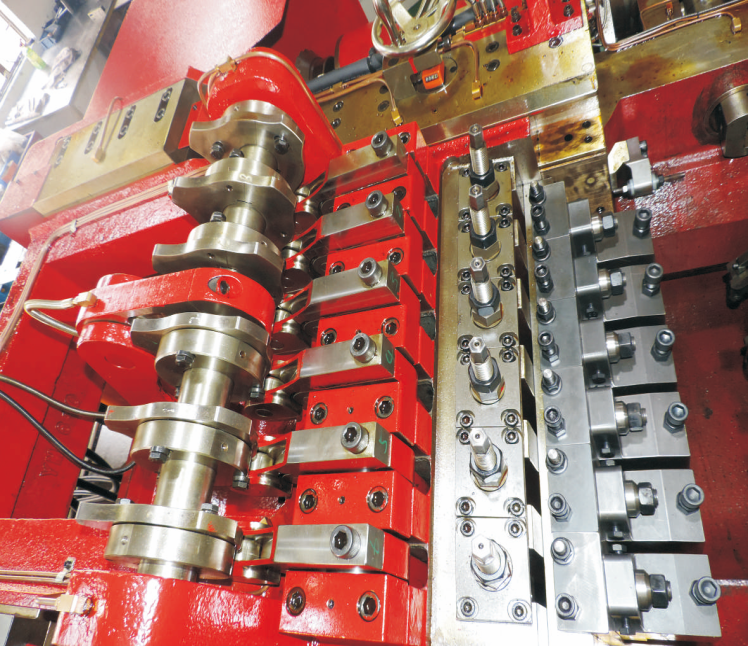
The main slider is connected with the rear wing dovetail design. During the operation of the main slider, the punching die and the main die are always concentric to ensure high production accuracy and stable operation. The main slider and the upper, lower and side surfaces of the two wings are made of super wear- resistant inlaid self-lubricating copper plates. Ensure the high precision of the machine, prolong the service life, and all the punching dies can realize the reverse striking function.
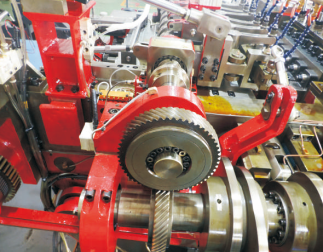
The side shaft cam clamp mechanism delivers exceptionally fast clamping response and outstanding operational stability. This is primarily attributed to its rigid, direct-drive principle of operation: the rotation of the cam shaft directly and immediately translates into precise linear motion of the clamp arm. This eliminates the delays, compliance, and potential for backlash often associated with linkages, gears, or fluid power systems. Consequently, the mechanism achieves rapid engagement and disengagement cycles (often in milliseconds), significantly boosting production line efficiency. Furthermore, the inherent mechanical rigidity of the cam profile and shaft ensures consistent clamping force is maintained reliably, even under varying loads or vibrations, providing superior holding security and process repeatability.
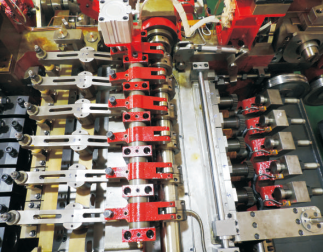
Swing arm type pneumatic clamp,the clamping force is adjustable and can be rotated. When there is a short material, the first group of clamps will automatically open and not clamp the material.

The side shaft cam-driven scissor mechanism delivers exceptionally high cutting speeds while simultaneously producing remarkably smooth, high-quality cut surfaces. This performance is achieved through the rigid, positive mechanical action of the cam: its precise rotational profile directly and forcibly drives the scissor blades through their cutting stroke. This eliminates the compliance, vibration, and potential for hesitation often found in linkage or pneumatic systems, ensuring rapid, consistent blade acceleration and deceleration. Consequently, the mechanism achieves significantly reduced cycle times and minimizes material deformation or burring during the cut. Furthermore, the inherent mechanical stability and precise control of the cam motion guarantee consistent blade alignment and force application throughout the cut, resulting in clean edges, minimal thermal distortion (especially important for plastics/composites), and superior surface finishes.

The primary clamp array precisely sequences hydraulic cylinder actuation, ensuring ±0.5mm positional control during high-force tooling operations.
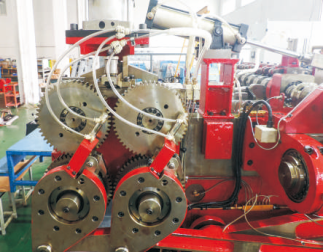
This ratchet-driven wire feeding mechanism integrates multiple sprag-type overrunning clutches (one-way bearings) that synchronize with a hardened steel pawl assembly to eliminate backlash (<0.1°). The coordinated interaction delivers zero-return feed stability for high-tension applications, preventing material regression under 150N+ loads. Precision ground ratchet teeth ensure positive engagement during micro-feeds (0.05mm resolution), while spring-loaded failsafes eliminate micro-slippage. The system maintains ±0.03mm positional accuracy across 500k+ cycles, enabling reliable processing of fine-gauge wires and alloys.
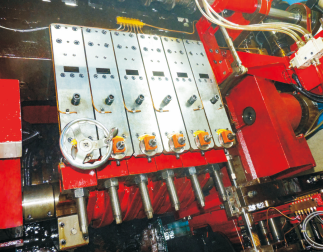
Following hand-crank digitization via an absolute rotary encoder, the telescoping adjustment mechanism deploys externally for tool-free access. Each station now features individual servo-adjusted leadscrews (±0.003mm resolution) enabling isolated calibration during operation. This eliminates cross-station interference while allowing real-time compensation for thermal drift or tool wear. Setup time reduces by 75% with positional repeatability maintained at 99.7% across 10,000+ cycles on CNC press brakes.
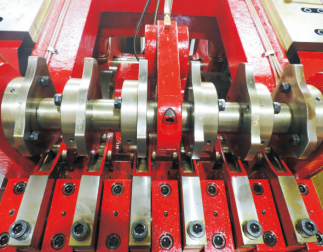
This cam-driven ejection mechanism enables precise, independent adjustment of the ejection stroke for each ejector pin (or ejection unit). This design allows for customized settings tailored to specific product release requirements across different mold sections or cavities, significantly enhancing the mechanism's flexibility and reliability in complex or multi-cavity mold applications.
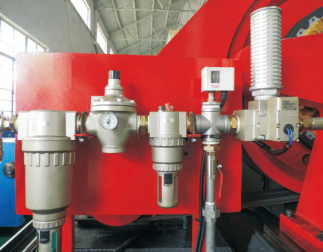
This Japanese-engineered centralized pneumatic regulation system features SMC-manufactured proportional valves and Festo filtration units with automated moisture ejection. Maintaining ±0.15% pressure stability across 8 independent circuits, its anodized aluminum manifold withstands 250,000+ PSI-cycles. JIS B8370-certified components deliver <0.01% drift/year with IP67-rated dust resistance. The system achieves 98.7% uptime in stamping applications, reducing maintenance interventions by 30% versus conventional setups through predictive leakage monitoring and ceramic-coated actuators.
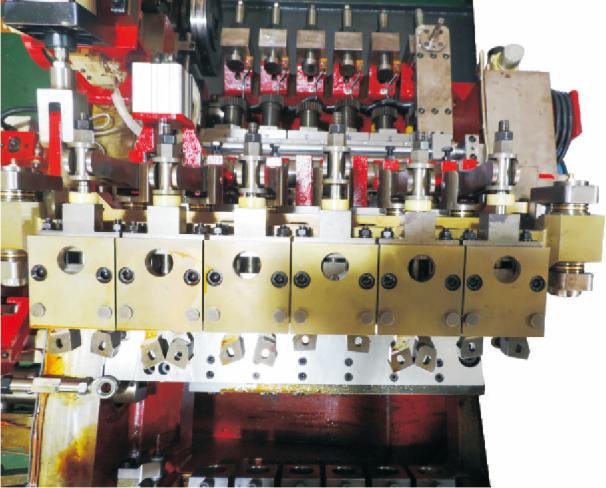
This high-precision compound pneumatic clamp mechanism maintains ±0.005mm repeatability through linear guides and servo-regulated pressure control. It delivers sub-second clamping cycles (<0.8s) with zero vibration, while dual-circuit pneumatic architecture enables instant reverse clamping force (up to 25kN). The self-compensating seal system prevents drift during extended operations, and tapered locating pins ensure distortion-free positioning for thin-walled components. Reverse mode functionality eliminates secondary tooling requirements for inverted processing applications, reducing changeover time by 40%.

The horizontal linear feeding system can precisely control the length of each feeding,increase the force area between the clamp and the wire,and prevent the wire from being pinched.

This secondary power transmission mechanism employs forged helical gears with 4:1 torque multiplication, generating up to 35% greater upsetting force versus primary drives. Its tapered roller bearing configuration and splined output shaft ensure ±0.02° angular stability under eccentric loading. The dual-mass flywheel absorbs torsional vibrations, maintaining 93%+ power consistency during continuous forging operations. Thermal-compensated housing eliminates deflection, enabling distortion-free heavy-section upsetting at 800+ ton capacities.
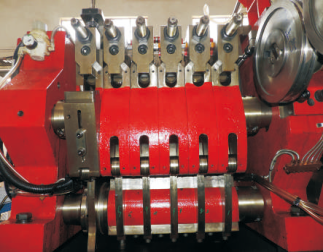
Upon deployment of the externally accessible adjustment mechanism, each processing station achieves fully independent calibration via dedicated servo-driven leadscrews (±0.005mm repeatability). This enables station-specific optimization for variable material thicknesses or tooling wear without disrupting production flow. Crucially, the terminal station features a quick-swap cam system allowing <2-minute replacement of the master cam profile. Operators can install asymmetric or multi-lobe cams to reconfigure the kinematic profile, activating a synchronized secondary cutting motion that executes precision trimming operations. The integrated design eliminates cross-station interference while reducing scrap rates by 18-22% in high-tolerance die-cutting applications through adaptive force control and real-time stroke compensation.

This direct-drive linear feeding motor guarantees ±0.002mm positioning repeatability via integrated optical encoders and temperature-compensated control algorithms. It eliminates mechanical backlash through preloaded ceramic guide rails while maintaining constant velocity profiles (±0.5% deviation) at accelerations to 5g. The slotless winding design prevents cogging, enabling sub-micron material advances (0.0005mm resolution) for semiconductor leadframes and micro-medical components. Active vibration damping ensures stable operation during high-frequency indexing (1200+ cycles/min), achieving 99.8% feed accuracy over 10-million-cycle lifespans.
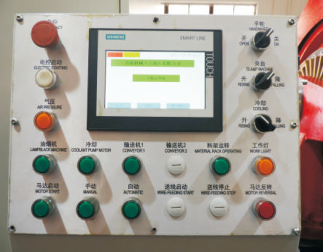
The system operates on independently developed control software, integrated with industrial-grade German touchscreen HMI (Human-Machine Interface). This synergy enables precise operational control with enhanced intuitiveness and responsiveness.

